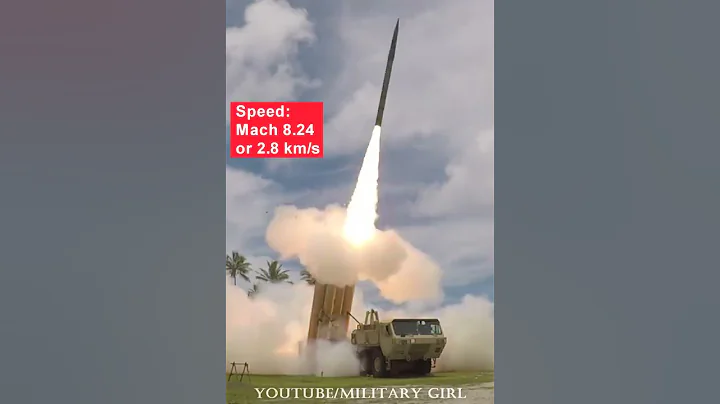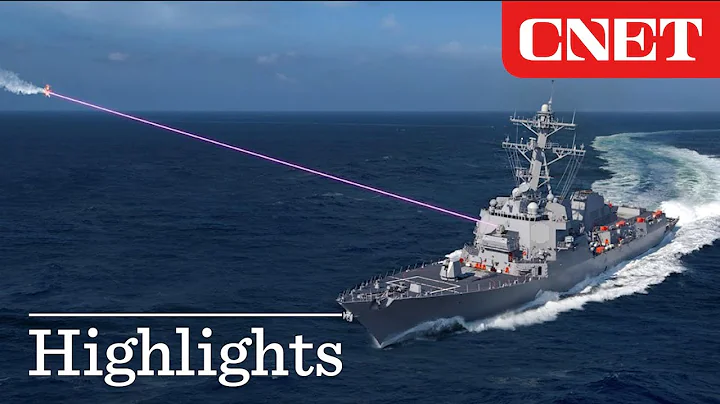According to a report by India's "Eurasia Times" on the 13th, American Lockheed Martin has delivered a compact laser weapon in February this year. It is said that this laser weapon has shot down the incoming missile in the air for the first time. So, can it be the game-changer in air combat that Western media promotes?
represents the most compact and powerful laser weapon technology
The U.S. "Emergency Defense" website stated that The plan being promoted by the Pentagon is called "laser development for the next generation of compact environments", "Lance" ( LANCE) is its acronym. According to the report, Lockheed Martin claimed that the delivery of the "Lance" in February this year was a key milestone for the U.S. Air Force in equipping tactical fighter jets with laser weapons capable of shooting down air-to-air missiles and anti-aircraft missiles. The report quoted Lockheed Martin executive Taylor Griffin as saying that this is the smallest and lightest high-energy laser of the same power level that the company has developed to date. He believes that this will become a "key benchmark" for actual combat airborne laser weapon systems.

U.S. sixth-generation fighter jet concept image of a laser-launched weapon
While the U.S. Department of Defense has introduced a number of different directed energy weapons in recent years, the Spear differs in its minimal size, weight and power requirements. Generally speaking, existing high-power laser weapons require bulky energy storage devices. Griffin said that the relevant technical requirements of the "Lance" are only 1/6 of a similar product produced by the company for US Army in 2017. Kent Wood, acting director of the Air Force Research Laboratory's Directed Energy Directorate, said the system "represents the most compact and powerful laser weapon technology ever delivered."
According to reports, Lockheed Martin won the initial contract to design, develop and produce the "Lance" in November 2017 as part of the "Air Force Self-Defense High Energy Laser Demonstrator" ("Aegis") program. The entire "Aegis" system consists of three parts: In addition to the "Lance", there is also a beam control system manufactured by Northrop Grumman, which is responsible for guiding the laser to the target, and is installed on the aircraft. The pod on is handled by boeing and . Griffin said that as the laser is shipped to the Air Force, the next step will be to begin integrating the weapon itself with the thermal management and cooling systems responsible for the Spear. When asked when the test launch would take place, Wood revealed that the Air Force had not yet made any final decisions for "follow-up activities." "Mission effectiveness analysis and wargaming studies are ongoing and will help determine how to use these subsystems as well as integrated laser weapon systems. Specific goals for future testing and demonstration will also be determined by the results of these studies."
United States The "War Zone" column of the "Power" website stated on the 12th that Boeing conducted a pod test without internal systems on a U.S. Air Force F-15 fighter jet in 2019. During ground tests in 2019, a laser called the Demonstration Laser Weapon System (DLWS) successfully shot down multiple air-launched missiles at White Sands Missile Range in New Mexico.
game changer?
According to the "War Zone" column, there are indications that the power of the "Lance" may be less than 100 kilowatts. In addition to being very small and light, the Lance has reduced energy requirements compared to other previous laser weapons, a key consideration for airborne lasers on fighter jets. Lockheed Martin has shown in concept images the pod carried by the F-16 fighter jet . The pod is located at the centerline hanging point on the belly of the aircraft and is smaller than the centerline fuel tank commonly used in F-16.

A U.S. Air Force F-16 fighter jet carries a laser weapon. (Lockheed Martin website)
Chinese military expert Zhang Xuefeng told the " Global Times " on the 13th that if this laser weapon pod can be installed on a fighter jet, it will be impossible to install it on other combat aircraft and support aircraft. question. After this type of laser weapon pod matures, it will first improve the survivability of these aircraft.Especially for large aircraft, it can not only directly destroy incoming missiles, but also can be used to efficiently interfere with infrared guided missiles. "Of course, this improvement is limited. Because incoming missiles are not always located within the irradiation direction of the laser, the detection and early warning of incoming missiles is also a problem." Zhang Xuefeng said that many helicopters are currently equipped with laser-based directional infrared interference systems, which use low-power lasers to interfere with the infrared seekers of incoming missiles. This system has played a great role in actual combat, but it cannot deal with all incoming missiles.
Secondly, the equipment of laser weapons will make air combat within visual range more dangerous. If this kind of laser can shoot down missiles, it can also directly damage or even shoot down opponent's fighter planes in air battles in the future, or cause harm to enemy pilots. This will further increase the risk of air combat within visual range.
Third, the use of laser weapons will have an impact on the design ideas of future fighter jets. Since laser weapons have the characteristics of large-scale shooting and "hit upon discovery", and there are currently no good countermeasures and countermeasures, this will further reduce the role of fighter jets' maneuverability in close air combat. Zhang Xuefeng believes that if the laser can be fully matured within five years, the requirements for mobility and agility of the new generation of fighter jets will be further relaxed.
will take some time to become practical.
Judging from the development history of "Spear", its progress is not smooth. At the end of 2017, and the US Air Force Research Laboratory stated that they would test laser weapons on fighter jets by 2021. But technological breakthroughs are not that easy. The U.S. Air Force announced last year that it had postponed flight testing of the laser weapons pod until 2023. The delay was "attributed both to technical difficulties and to work slowdowns caused by the coronavirus pandemic." Zhang Xuefeng believes that the current tens of kilowatts of vehicle-mounted and ship-borne laser weapons are basically mature and have been equipped with troops. For example, the U.S. Navy's "Laser Dazzling Interceptor" is mainly used to intercept drones or interfere with missiles. However, the development of laser weapons with greater power of hundreds of kilowatts and megawatts still faces some limitations. First, it is difficult to increase the range. Laser attenuation is relatively large in the atmosphere, especially in the presence of water vapor and sand and dust. Even if the more powerful ground tactical air defense laser weapons can reach hundreds of kilowatts, they are still limited by the aiming accuracy of the sighting device. Secondly, although laser weapons can "hit upon discovery", they still have shortcomings in "destroying upon hit". In order for existing laser weapons to effectively kill targets, they need to continuously and stably illuminate the target with sufficient power for several seconds. This requires ensuring that the control system can stably aim and track and illuminate a fixed position of the target for a long time. The U.S. Navy admits that the effectiveness of laser weapons depends on "the time it takes to focus on the same point," which is no easy task when targeting mobile targets.
Finally, laser weapons still need to make breakthroughs in power supply heat management. The motor used in the United States to meet the 50-kilowatt laser system has major challenges in heat management and cooling. 2/3 of the energy input into the system is converted into heat and wasted, and only 1/3 of the energy is output in the form of laser. When the American company Northrop Grumman was developing a land-based laser, it withdrew from the bidding due to continuous fire failures due to related technical problems. The 30-kilowatt and 150-kilowatt high-energy laser systems installed by the U.S. Navy on the amphibious ships USS Ponce and USS Portland need to recharge their batteries between launches, making it difficult to operate continuously. These problems are even more obvious for the airborne laser weapon , which is limited by volume and weight.
Source: Global Times





















